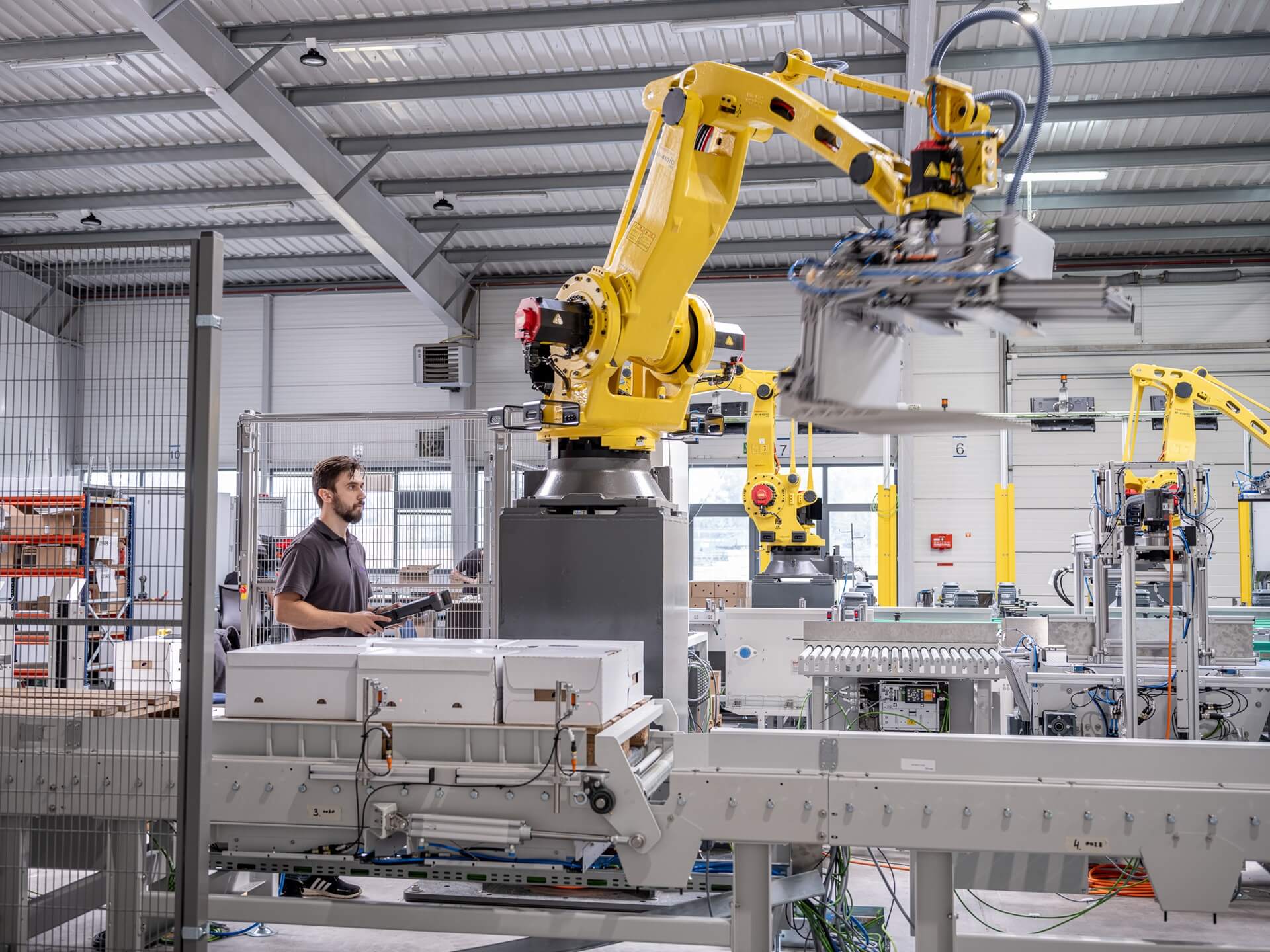
Modern robots in production are not only advanced machines but also a key element in the transformation of the entire industrial sector. Their role is no longer limited to automating repetitive tasks – today, they support the development and modernization of factories, enabling faster and more precise operations. Thanks to advanced technology, robots in production can work in harsh conditions where human intervention would be too risky, and their precision allows for results that are impossible to achieve with traditional manufacturing methods. However, it’s not just their precision and durability that make them indispensable – their ability to work in automated systems, combined with real-time data analysis, allows for better management of production processes.
By integrating with smart production systems, robots can autonomously optimize their performance, adjusting to changing conditions such as sudden shifts in orders or fluctuations in raw material availability. This makes them an invaluable tool for companies that prioritize innovation and adaptability to customer needs. As a result, companies that choose to implement robots gain not only efficiency but also flexibility and predictability in their processes, which is crucial in the rapidly changing market environment. In this way, robots in production are becoming the foundation of the future of industry, helping companies meet the challenges posed by global competition and rising consumer demands.
Production automation is becoming the standard in modern factories because it significantly improves processes and reduces errors. Implementing automation on production lines not only increases production speed but also enables more precise quality control. Moreover, automation allows for better resource utilization by optimizing the work of both machines and humans. Therefore, process optimization in production means not only shortening order fulfillment times but also improving the quality of final products.
A key element of this process is intelligent production systems that, through data analysis, can automatically adjust machine operations, eliminating resource waste. This means production lines can respond in real-time to changing conditions, such as sudden spikes in demand or changes in product specifications. Production automation also enables better monitoring of machine conditions, leading to a reduced risk of breakdowns and a longer lifespan for equipment. Businesses investing in these technologies can operate more efficiently, minimizing downtime and lowering operating costs.
Implementing production automation requires investment, but it brings a return in the form of increased competitiveness and better adaptability to changing market demands. Automated production facilities can bring new products to market faster, which is a critical factor in building a competitive edge.
Industrial robots in factories are an essential part of mass production. Their durability and ability to work continuously make them ideal for processes that require high efficiency and repeatability. Due to their capability to perform complex operations with exceptional accuracy, industrial robots can accomplish tasks that exceed human capabilities, such as precise welding or microcomponent assembly. They also support the robotization of industry, allowing companies to reduce labor costs and increase production efficiency. Additionally, by utilizing modern technologies in production, robots can be integrated with other systems, creating complex automation structures. This enables better resource management and optimization of entire production lines, which directly impacts production efficiency.
The decision between choosing cobots or traditional industrial robots depends on the specifics of the production process. Cobots, or collaborative robots, are designed to work alongside humans, making them ideal for environments where close human-machine collaboration is required. This allows them to assist workers with tasks such as assembly or quality control, increasing the flexibility of production processes. On the other hand, traditional industrial robots excel in more demanding environments where power and precision are a priority, such as metalworking or chemical processing. The robotic arm of an industrial robot has greater power, allowing it to perform tasks that require significant force or precise assembly.
When companies consider implementing automation in their production lines, they must carefully analyze their needs and goals. Cobots may be a better choice where flexibility and the ability to quickly adapt to changing orders are key. In contrast, traditional industrial robots will be indispensable where maintaining stability and repeatability in production is the most important factor. Both solutions have their place in modern factories, and their skilled combination allows for achieving maximum efficiency across various production segments.